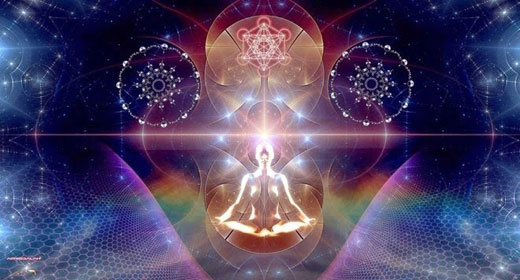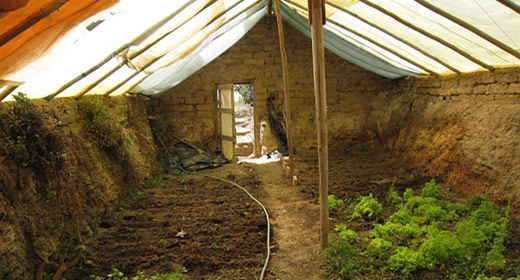by Biljana Drndarevic: Our home is our safe haven, and we have probably never been more aware of this than we are right now, after a long few months of collective confinement…
The way our homes are laid out, decorated, and maintained can have a powerful impact on how we feel, how productive we are, or how well we sleep. Probably even more so if we share that space with other people, where our individual energies and personal styles are bound to affect one another.
Though we regularly write about innovative, creative, or sustainable ways to decorate your place, today we’re taking a deeper look at an ancient Chinese practice that goes way beyond mere decoration and aims to bring a deeper balance and harmony to your home. Yes, we are talking about feng shui.
What is feng shui?
Feng shui is a complex system of ancient practices that aims to enhance your wellbeing inside a space (be it a home, an office, or a garden) by promoting a good flow of energy within that space. Chi (also spelled qi) is the term used in feng shui to refer to the universal energy present in and around us. The aim of feng shui is to direct the flow of Chi within our space in a way that contributes to a good flow of Chi inside ourselves as well; because ultimately, it is this universal energy that connects us, humans, to the space in which we exist.
Feng shui is understandably an immense and complex system of traditional practices, and no single blog post can possibly aspire to make you an expert on it. So we’ll start by breaking it down into the basic concepts and principles, to give you a solid understanding of what it’s all about – and what it isn’t.

In a nutshell, decorating with feng shui means knowing how to choose the right colours and decorative elements and use them in the specific areas of your home to bring about nourishing energy to your space and to the different areas of your life. You can, and should, do this so that it complements any existing decorative style inside your home and matches your personal aesthetic taste. If you don’t like how something looks, it’ll be impossible to create positive energy around it.
Therefore, feng shui is not an imposition of strict rules, because no strictness breeds a healthy flow of energy, which is what feng shui is all about. It is also not a simple practice of buying a bunch of feng shui symbols, such as wind chimes or crystals, and randomly placing them around your home. It’s about understanding how things in our environment are related to one another and to ourselves, and then taking the bits from that vast body of knowledge that work for you and applying them to your space with thought and care.
Inspired? Let’s dig in!
The four basic concepts in feng shui
The best way to start understanding how the vast system of feng shui practices work is to look at some of the basic concepts that permeate it all. These are the principle of the five elements, the bagua areas, the application of colour, and the notion of the command position. Let’s look at them one by one.
1 The five elements
The five elements of feng shui are wood, fire, earth, metal, and water. Their correct presence and placement in our space stimulates Chi and promotes our wellbeing. The optimal placement of the five elements is determined by the energy map of our space, called bagua in feng shui. Bagua tells us what part of our home needs which one of the five elements, and we will explore it in the next section.

Let’s first look at the expression of each of these five elements individually.
Wood
The element of wood sustains health, vitality, and growth. It is also an element of abundance, so it’s used to promote wealth and prosperity as well. It is expressed in green and brown colours. Decorative elements that add wood to your space are lush and healthy plants, green pillows or cushions, imagery of vegetation, and similar.
Fire
Fire brings the energy of the sun, and with it a sense of joy and creativity. It is also an element of love, romance, and passion. Fire is represented in the shades of red, bright yellow, orange, pink, purple, and magenta. To add the element of fire to your space, use candles in one of the above colours, images of fire, yellow lampshades, or smaller red or pink cushions. Don’t go too big on decorative elements in the bright reds of the fire element, or they will overpower your space.
Earth
Earth stands for nourishment, protection, stability, and support. It provides us with an inner sense of groundedness and peace. As such, it is a crucial element to add to our hectic and stressful modern lives.
The earth element is expressed in beige, sandy, and taupe colours, and it is particularly well suited for the bedroom. You can add this element through the use of pottery, beige rugs, light yellow pillows, photos and images of landscapes, and similar.
Metal
Metal brings structure and discipline, efficiency and productivity. It also eliminates distractions and helps create a sense of calm, clarity, and lightness. Its colours are white and grey. Use it to balance out places that are overly warm and cosy, but may lack some structure, though be careful not to overuse it and end up creating a space that is cold and unwelcoming. The decor that adds the metal element to your space includes white pillows and rugs, grey walls or wall decorations, metal frames and bowls, and the like.
Water
As one of the most powerful elements, water brings the refreshing energy of ease and harmony, and it provides us with a sense of flow and renewal. It is also a symbol of abundance, often used in feng shui to cultivate wealth. The colours of the water element are blue and black. To add water to your space, use mirrors, fountains, images of water, blue rugs, and similar decorative pieces.
You’ve noticed that each element is expressed through a specific colour. This means that the presence of any given element can be brought into a space by introducing its corresponding colour. For example, if we wanted to bring more clarity to our space by adding the metal element, we wouldn’t necessarily need to include things made of metal. A fluffy grey pillow or a white rug would serve just as well, since white and grey are the expressions of the metal element itself. More on that in the section on colour.
2 The bagua areas
Bagua is a feng shui name for the energy map of your space. It shows which areas of your home are connected to which areas of your life. The classical feng shui divides your space into eight areas, defined by the compass direction of your front door. Each of these eight areas corresponds to one of the five elements, which needs to be nourished in that area for good feng shui energy.
Let’s look at the eight bagua areas and their corresponding elements:
- South – Fame and Reputation – Fire
- Southwest – Partnership and Marriage – Earth
- West – Children and Creativity – Metal
- Northwest – Helpful people and Travel – Metal
- North – Career and Life Journey – Water
- Northeast – Knowledge and Wisdom – Earth
- East – Family and Health – Wood
- Southeast – Wealth and Prosperity – Wood

So, say you’d like to enhance wealth and prosperity through feng shui. You’d need to use the bagua map to determine which area of your home is the wealth area, and then use its corresponding element to stimulate the energy of that area.
How to determine the bagua map of your home
Before you jump into creating the bagua map of your space, it’s important to know that there are two approaches – Traditional and Western. The traditional approach uses a compass to determine the orientation of your house, whereas the Western only requires a piece of tracing paper and a pen. You can use either, but when you choose one, stick to it to avoid further confusion.
It may seem complex, but as with all abstract theories, it’s much easier to wrap your head around if you test it in practice. So choose your preferred method of bagua mapping, draw up the floorplan of your space, and start playing with the bagua areas!
3 Use of colour
It’s no news that colour is an essential element in any decorator’s toolkit. But to understand how colour works in feng shui, we should remember that colour is the visual perception of light waves. Different wavelengths, different colour. And since light is energy, so is colour.
Why is this important? We know by now that feng shui is all about energy (Chi) and how it flows through our space. Different colours carry different energy qualities, which according to feng shui correspond to the energy of the five elements. That’s why earlier, when discussing the elements, we also looked at what colour expresses each of them.
Colour is probably the easiest way to quickly change the energy of a space. And since colour is tied to the specific elements, and the elements are tied to the bagua areas, the application of colour will also depend on the eight areas of your space. See how it’s all coming together?

In order to create good feng shui energy, you should choose colours that strengthen the element of the area you are decorating. Following our example above, if you wanted to enhance wealth and prosperity through feng shui, this is what you’d need to do:
- Map the bagua areas onto your floor plan to determine which area of your home corresponds to wealth.
- You know that the element of the wealth area is wood, and that wood is expressed as green and brown, so you’d choose your decorative elements accordingly (a lush plant, for example) and place them in the designated wealth area.
4 The command position
The command position within a room is the optimal position to be in that room in order to enjoy the best energy flow and to feel good. According to feng shui, this is the position that is diagonal from the door and furthest away from it, so this is where you should place the main pieces of furniture. Placing the furniture in the command position is particularly important in the bedroom and the living room, where you typically spend a lot of your time.
If the diagonal placement is not possible in your space, you should at least ensure that you can see the door from where you’re sitting, standing, or lying down. This is especially important in your bedroom. You’re at your most vulnerable when you’re in your bed at night. If you can’t see the door from your bed, you will feel more vigilant and tense, and you won’t be able to fully relax. For a good night’s sleep, never have the back of your head facing the door of the bedroom.
What further strengthens the command position is a good backing behind you. This means that you don’t want to have your back to a large window when sitting or lying down. A headboard on your bed also acts as good backing and it keeps you protected and grounded.

How to get started with feng shui
There is so much more to feng shui than what we have covered here, but we hope that this is a good start to understanding what it’s all about. Now that you know the basic principles and understand how the different concepts come together, you can take it a step further and learn about the different feng shui symbols and cures and how to incorporate them into your decor.
But before you rush off to buy a water fountain or a lucky bamboo, start with this one crucial first step – decluttering your space. No amount of feng-shuing will create a good flow of energy in a cluttered space. Good places to start are your wardrobe or your kitchen.
Once you’ve cleared up and made space for a healthy flow of Chi, choose one or two areas of your life you’d like to enhance and go over the basic principles to work out where to put in the work. Don’t try to do too many things at once and give your entire place a major feng shui makeover. Start small, expand your knowledge through practice, and let your own experience show you what a powerful tool feng shui can be when it comes to adding a sense of safety, harmony, and stability to your home. We could all do with a bit of that right now.










































